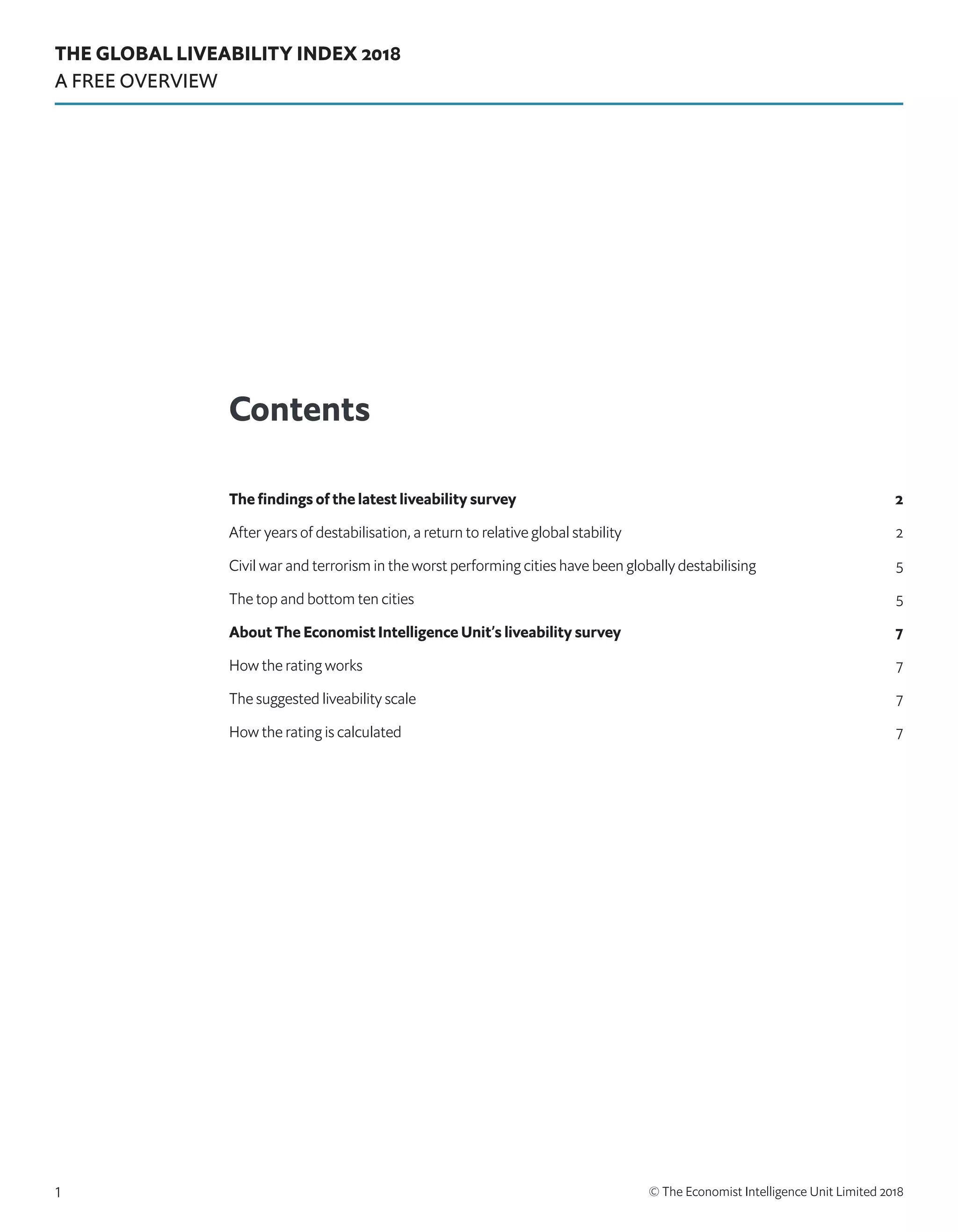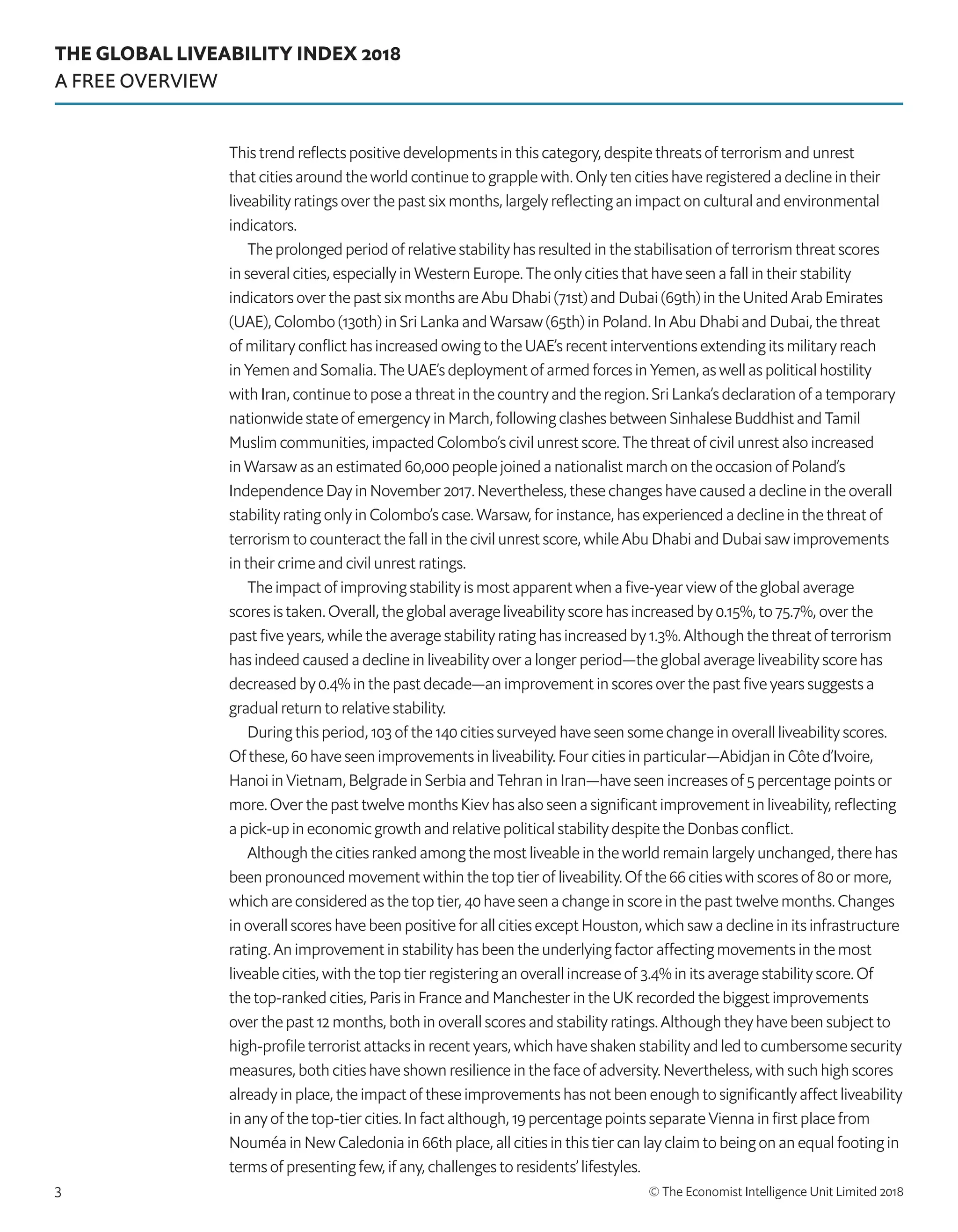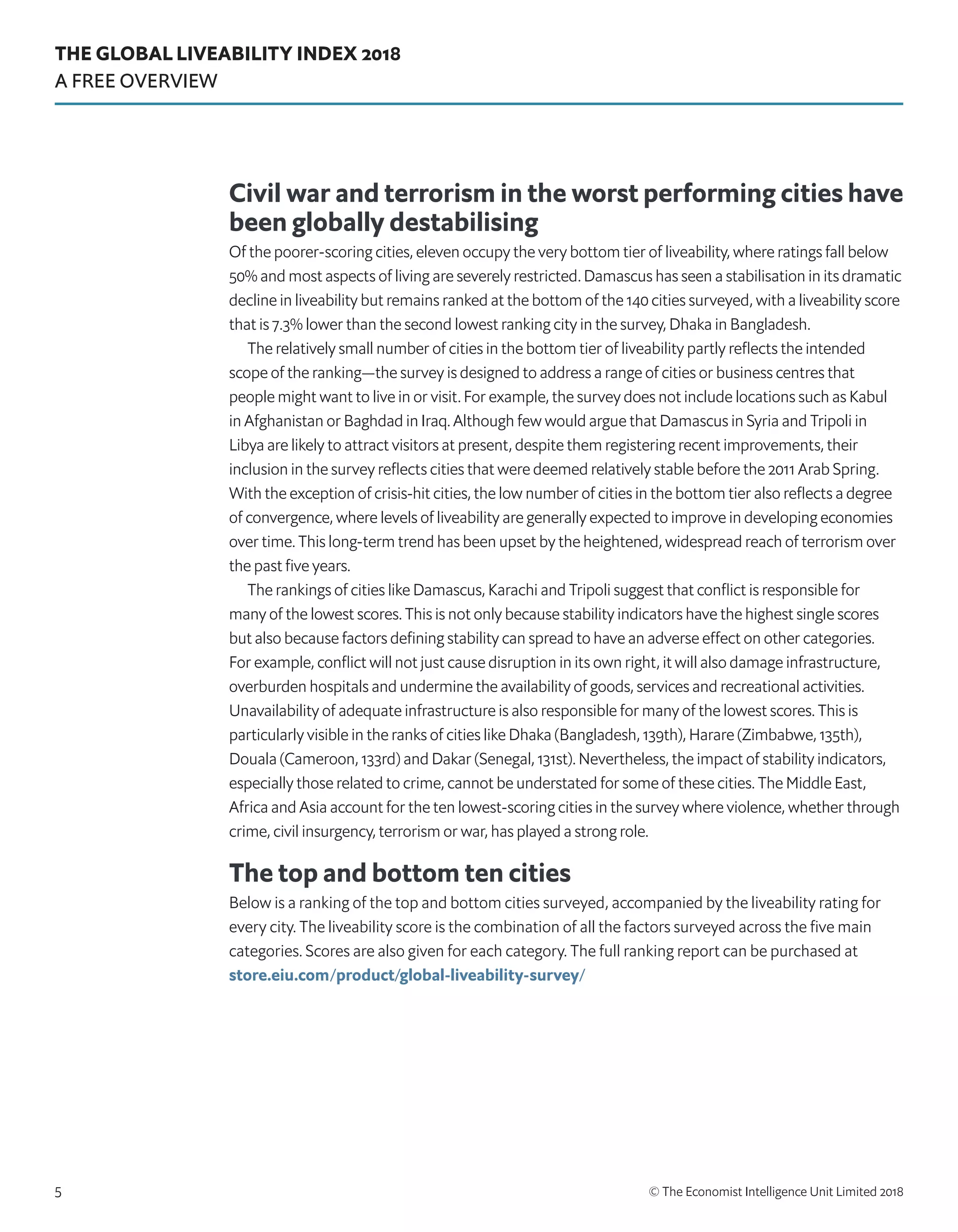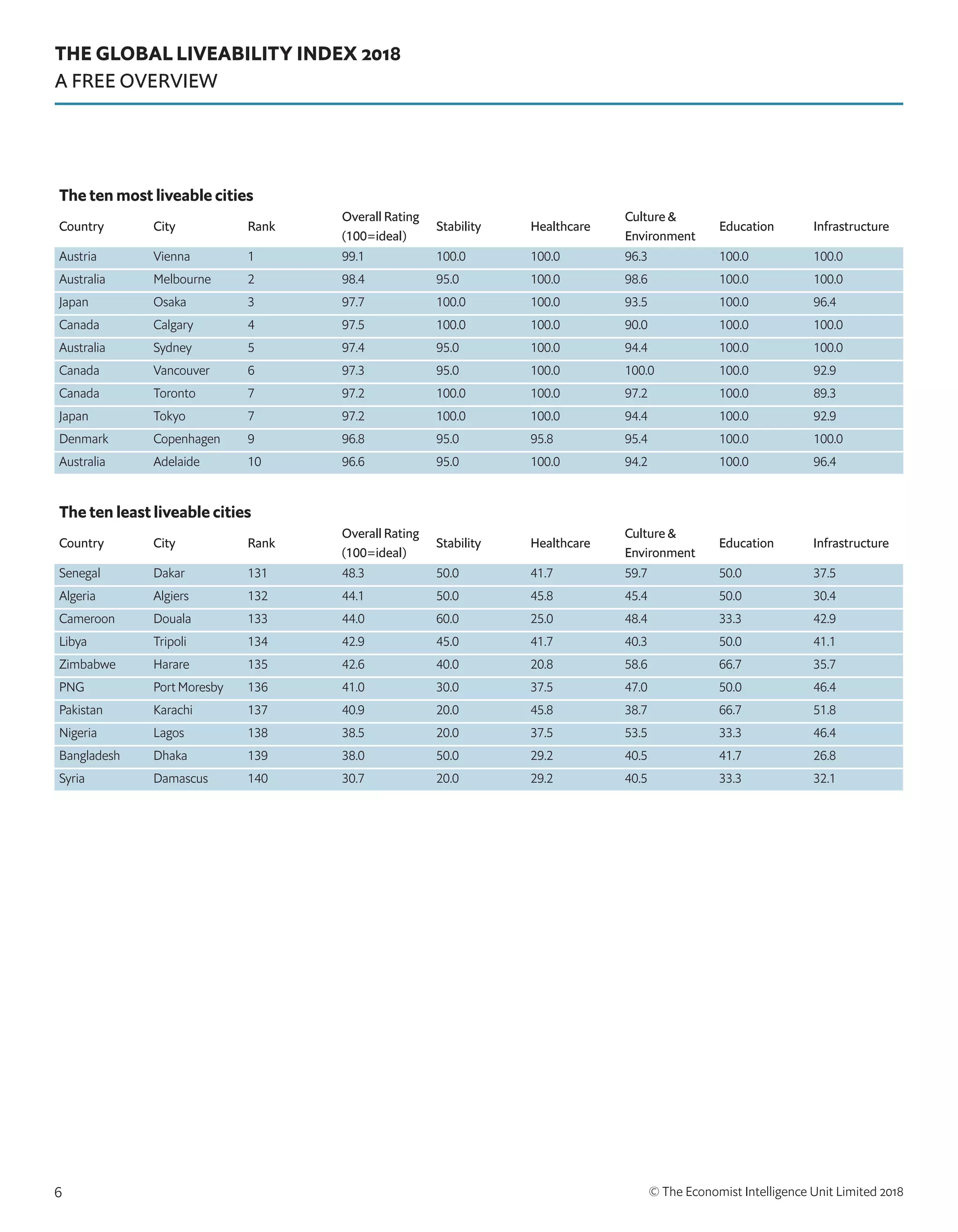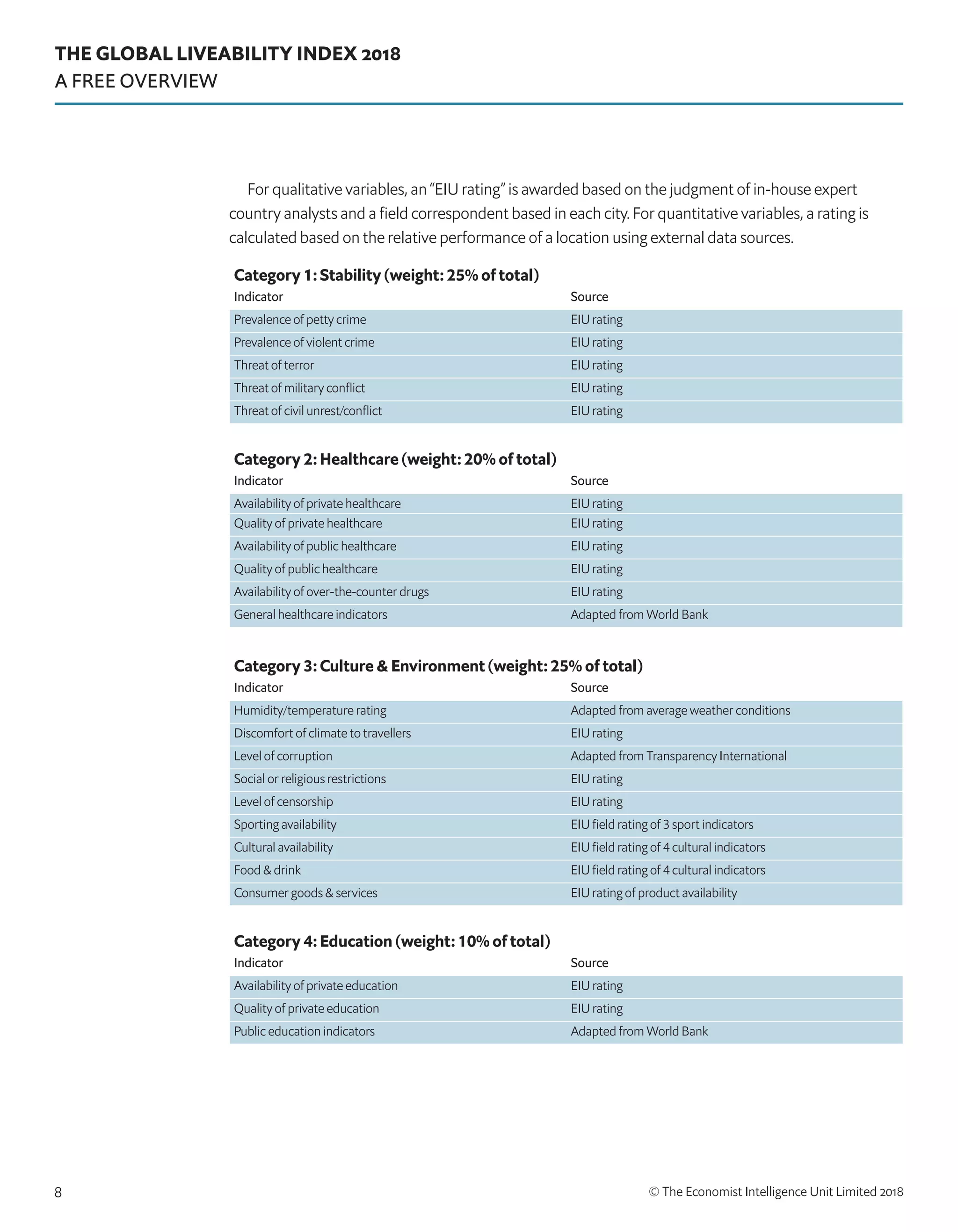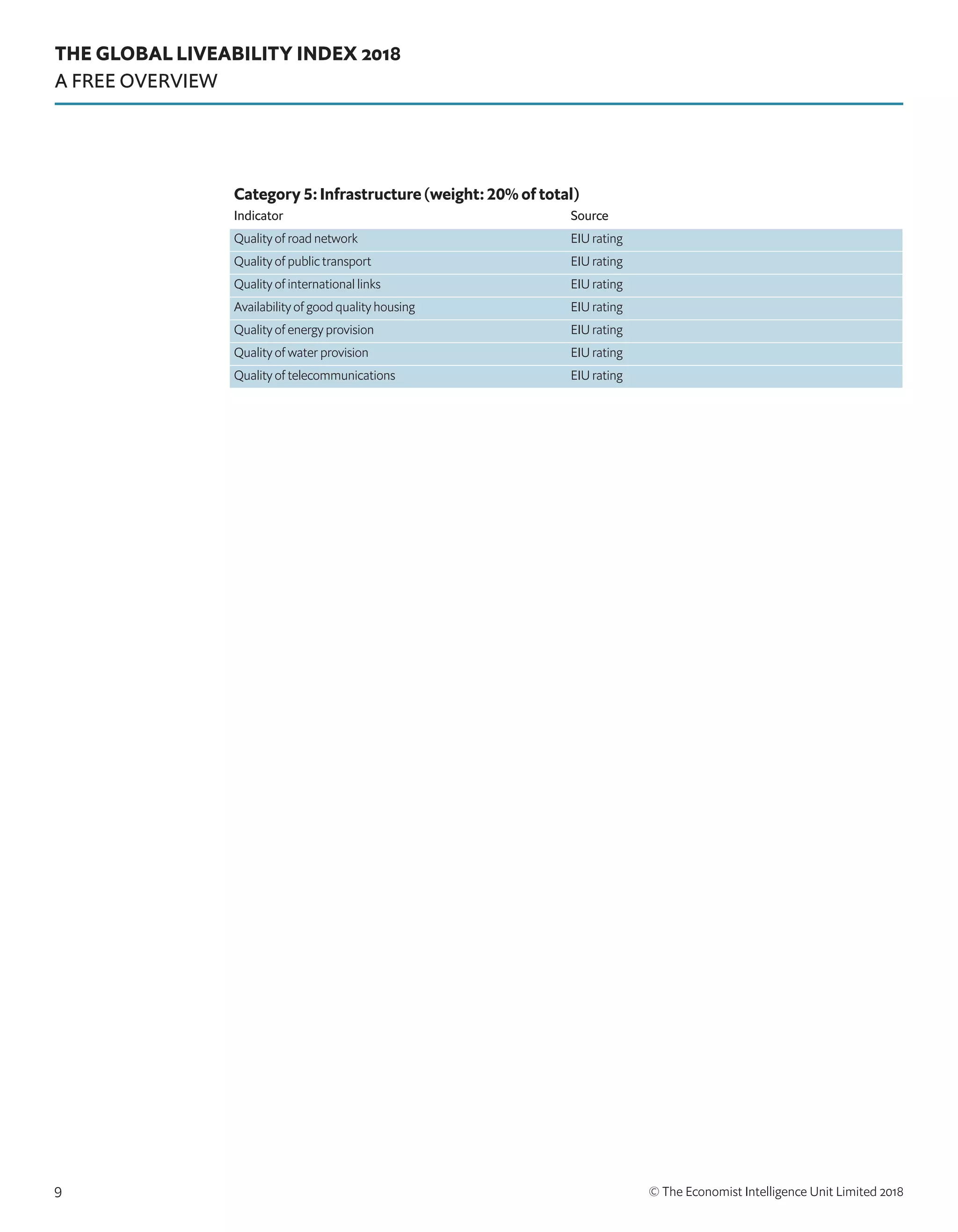Vienna ranks as the most liveable city in the world for the first time, overtaking Melbourne. Overall liveability has increased slightly over the past year due to improved stability in many cities. Cities in the top ten tend to be mid-sized and in wealthier countries with lower population densities. Civil war and terrorism have severely reduced stability and liveability in the worst performing cities like Damascus, Karachi, and Tripoli.


